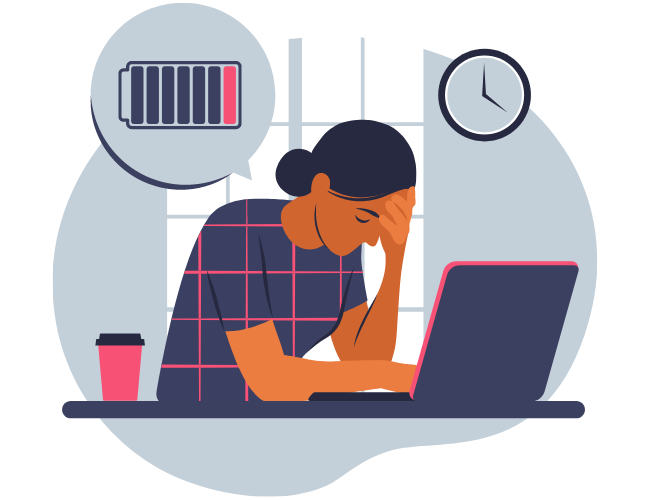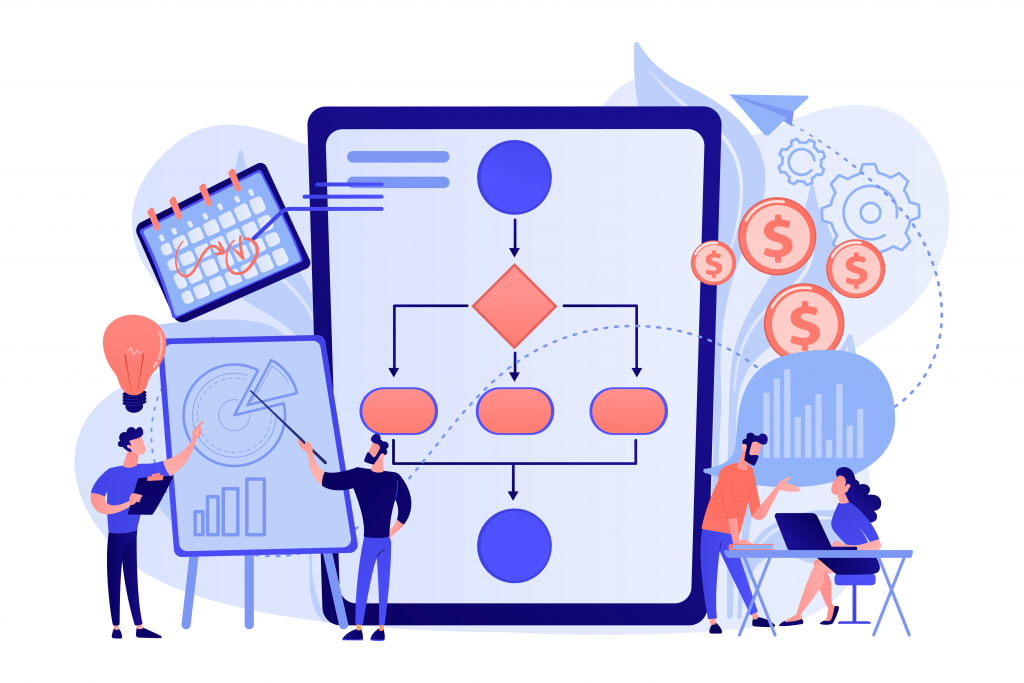Intense or prolonged stress can negatively impact just about every aspect of wellness. It can deteriorate physical health, lead to or exacerbate mental health problems, and even disrupt a variety of cognitive processes that are essential for learning and problem solving (e.g., working memory, attention).

Workplace stress arises when job demands exceed one’s resources and ability to cope, negatively impacting employee productivity, engagement, and overall health. HR professionals play a critical role in shaping an organizational culture that prioritizes employee well-being and mitigates workplace stress. However, it’s equally important for employees to manage their own stress to maintain productivity and resilience.
This article covers various strategies to manage and mitigate workplace stress at both the organizational and individual level, ensuring long-term success for HR professionals and the organizations they support.
Tips To Manage Stress At Work And Avoid Burnout
Addressing workplace stress effectively goes beyond surface-level initiatives; it involves systemic shifts in organizational culture, policies, and practices.
1. Develop & Review Policies
Policies that support work-life balance provide employees with a sense of autonomy and boost their overall well-being. HR professionals should advocate for:
- Flexible work: Institute flexible work arrangements, including free form hybrid models, remote work options, and adjustable hours.
- Communication boundaries: Establish rules regarding after-hours communication to enable employees to fully disconnect from work.
- Ample time off: Implement a generous time-off policy, such as unlimited paid time off, demonstrating trust in employees and a commitment to work-life balance.
2. Shift Culture
A positive company culture promotes healthy work habits and supports mental health. Creating such an environment involves:

- Open dialogue: Encourage discussions about mental health to reduce stigma and ensure employees feel safe seeking assistance.
- Boundary-setting: Establish a culture where it’s acceptable to say no or to negotiate workload and deadlines responsibly, encouraging leaders to respect those boundaries and work collaboratively to find solutions.
- Leading by example: Have organizational leaders demonstrate healthy stress management techniques and work-life balance (e.g., logging off promptly at the end of the workday) to set a standard for well-being and create a ripple effect throughout the organization.
3. Train Leadership
Leaders directly influence how stress is managed within their teams. HR can equip them with the necessary skills through:
- Stress awareness training: Provide training to recognize and address signs of stress among team members, ensuring managers get ahead of potential burnout.
- Emotional intelligence training: Encourage high emotional intelligence through training, which translates into effective, empathetic communication skills that can diffuse potential stressors within teams.
4. Allocate Resources
An organization’s commitment to managing workplace stress is also reflected in the resources it allocates to support employee well-being. This includes:

- Wellness program: Implement a holistic wellness program that includes physical, mental, and emotional health initiatives to help employees develop resilience, reduce stress levels, and improve health. Employers can also opt for a stress-specific wellness challenge, like Wellable’s Stress Less Challenge.
- Employee Assistance Programs (EAPs):Provide confidential counseling and support services to help employees manage personal and professional stressors.
- Wellness rooms: Create designated spaces for relaxation and stress relief, such as meditation rooms, which provide a physical escape from stressors.
- Financial assistance: Offer lifestyle spending accounts (LSAs) for gym memberships, meditation apps, or other stress-reduction tools to empower employees to manage their stress individually.
- Stress management training for all employees: Although not everyone in leadership needs in-depth training, consider sharing basic stress management techniques with all employees to empower them to manage their own well-being.
5. Identify Stress
Distributing self-assessment tools allows employees to identify their stress levels and workplace triggers, guiding them toward tailored coping strategies and interventions. Prevalent types of stress include:

- Acute stress: A short-term response to immediate threats or pressures (e.g., preparing for an impending deadline or dealing with a difficult client).
- Episodic stress: Frequently occurring acute stress due to a series of ongoing high-pressure situations (e.g., a project manager facing back-to-back deadlines or a salesperson dealing with high monthly targets).
- Chronic stress: Long-term occurrence of stress resulting from ongoing, unrelenting demands or pressures (e.g., working in a toxic work environment or enduring continuous understaffing issues).
Additionally, offering wearable devices at discounted prices can empower employees to manage their stress more effectively. Devices like the Oura Ring, for example, track biometrics such as heart rate, heart rate variability (HRV), and body temperature, helping employees monitor stress levels throughout the day. By recognizing patterns in their physiological responses, employees can learn how their bodies react to stress and take proactive steps toward maintaining balance in their daily lives.
6. Manage Time & Prioritize
Efficient time management reduces stress by preventing overload and burnout. Organizations can promote these skills through:
- Organizational tools: Provide planners, apps, or tools that help track responsibilities and deadlines.
- Manager check-ins: Encourage one-on-one manager check-ins to discuss bandwidth, prioritize tasks, and set realistic expectations.
7. Reduce Stress With Relaxation Techniques
Focusing on rejuvenation, mindfulness, and physical activity can help employees cope with day-to-day stressors. Practical techniques include:

- Regular breaks: Encourage short walking or stretching breaks throughout the workday to refresh and recharge.
- Mindfulness and meditation: Stress often emerges while dwelling on the past or worrying about the future. Integrate meditation sessions and practice mindfulness to help employees remain present.
- Regular physical activity: Implement group fitness classes or organize walking meetings to promote regular exercise, which is linked to improved mental health.
8. Cultivate Peer Support
Establishing peer support in the workplace can help alleviate isolation and build a supportive environment for all workers. Support mechanisms include:

- Peer support groups: Create outlets within the company for HR professionals to share experiences and coping strategies.
- Mentorship programs: Develop programs that pair less experienced HR staff with seasoned professionals for guidance and support.
9. Work-Life Boundaries
Maintaining work-life boundaries is key to properly recharge and maintain productivity. Consider establishing:
- Communication windows: Establish specific times when HR staff are available for non-urgent communications, helping to manage the flow of incoming requests and reducing the pressure to be constantly available.
- Regular breaks: HR professionals handle sensitive information and emotional situations that can be draining. Schedule regular breaks to help them decompress without the risk of carrying over stress from one case to another.
10. Optimize Efficiency
To manage workloads efficiently and prevent burnout, HR professionals can integrate the following:
- HR automation tools: Leverage AI tools to help streamline processes, freeing up time for more strategic activities.
- Cross-training: Implement cross-training to ensure that multiple people can handle critical functions, reducing overload on a single person and ensuring continuity during absences.
Measuring Success Of Stress Management Initiatives
To determine the impact of implemented policies and programs, HR should gather data that can inform decision-making and identify areas for improvement.
Quantitative Data Points
Gather numerical data to assess the outcomes of stress management initiatives, including:
- Absenteeism rates and turnover rates: High rates may signal unaddressed workplace stress.
- Employee health insurance claims: A decrease in these claims, especially those related to mental health, can indicate improved stress management and employee well-being.
- Participation rates: Assess participation rates in wellness programs, EAPs, and other initiatives to evaluate employee interest and ongoing engagement.
Qualitative Data Points
Regularly collecting employee feedback is crucial for understanding their experiences and perspectives. Consider distributing:
- Well-being surveys: Include questions about stress levels, satisfaction with organizational support, and overall engagement to gauge the health of the workforce.
- Culture assessments: Measure how comfortable employees are discussing stress, mental health issues, and other personal concerns within the workplace. This data can help shape a psychologically safe and supportive environment.
This article was last updated on November 12, 2024












